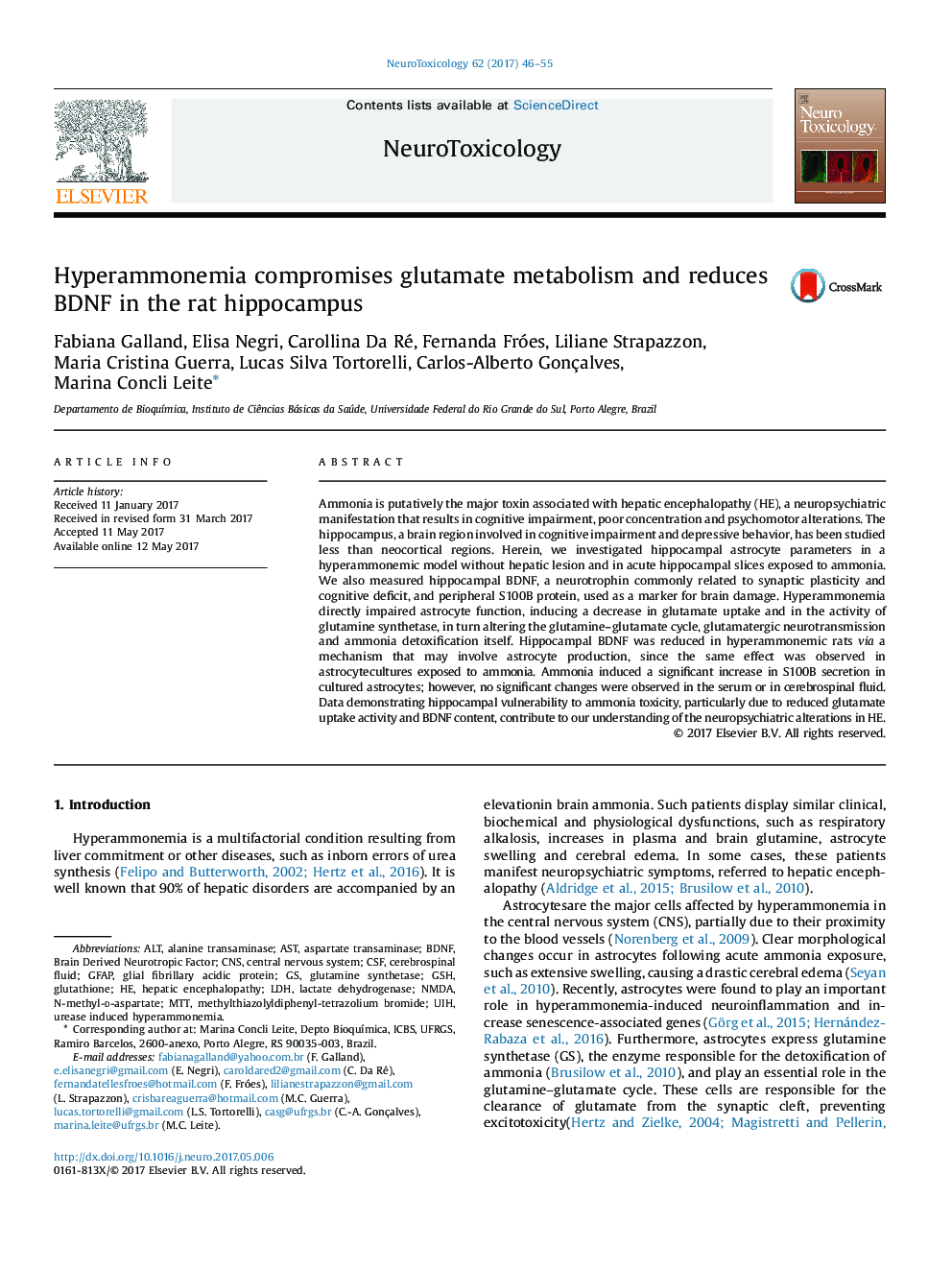| Article ID | Journal | Published Year | Pages | File Type |
|---|---|---|---|---|
| 5560787 | NeuroToxicology | 2017 | 10 Pages |
â¢BDNF is reduced in hippocampus under ammonia toxicity.â¢Astrocytes play an important role in BDNF secretion.â¢Glutamine-glutamate cycle is compromised in hyperammonemia in hippocampus.
Ammonia is putatively the major toxin associated with hepatic encephalopathy (HE), a neuropsychiatric manifestation that results in cognitive impairment, poor concentration and psychomotor alterations. The hippocampus, a brain region involved in cognitive impairment and depressive behavior, has been studied less than neocortical regions. Herein, we investigated hippocampal astrocyte parameters in a hyperammonemic model without hepatic lesion and in acute hippocampal slices exposed to ammonia. We also measured hippocampal BDNF, a neurotrophin commonly related to synaptic plasticity and cognitive deficit, and peripheral S100B protein, used as a marker for brain damage. Hyperammonemia directly impaired astrocyte function, inducing a decrease in glutamate uptake and in the activity of glutamine synthetase, in turn altering the glutamine-glutamate cycle, glutamatergic neurotransmission and ammonia detoxification itself. Hippocampal BDNF was reduced in hyperammonemic rats via a mechanism that may involve astrocyte production, since the same effect was observed in astrocyte cultures exposed to ammonia. Ammonia induced a significant increase in S100B secretion in cultured astrocytes; however, no significant changes were observed in the serum or in cerebrospinal fluid. Data demonstrating hippocampal vulnerability to ammonia toxicity, particularly due to reduced glutamate uptake activity and BDNF content, contribute to our understanding of the neuropsychiatric alterations in HE.
